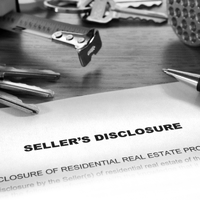 “Where a seller recklessly tells half-truths or knows the facts, but does not reveal them because he or she has not bothered to consider the significance, this may also amount to fraud” (extract from judgment below)
“Where a seller recklessly tells half-truths or knows the facts, but does not reveal them because he or she has not bothered to consider the significance, this may also amount to fraud” (extract from judgment below)
Firstly, a note on the CPA
What is said below does not pertain to those property sales where the very robust buyer protections in the CPA (Consumer Protection Act) apply. Generally speaking the CPA applies only where the seller is selling “in the ordinary course of business” (a developer for example), and most private sales will fall outside its ambit. That whole question is however a big topic on its own so watch this space for a future article on “Voetstoots v CPA”.
Voetstoots – the limits
You will know how vital it is for property sellers to protect themselves with a correctly-worded “voetstoots” clause in the sale agreement. It effectively provides that the property is sold “as is”, so the buyer carries the risk of there being any “latent” defects (i.e. those “not visible or discoverable upon an inspection”), and the seller is only responsible for them if the buyer is able to prove that the seller –
- Knew of the latent defect at the time of the sale, and
- Did not disclose it, and
- Deliberately concealed it with the intention to defraud.
In other words as a seller, if you know of a defect you must disclose it to the buyer. Record any disclosure/s in a written and signed annexure to the deed of sale.
In real life of course there are often grey areas around what exactly is or is not “a defect” and when you will or will not be taken to have acted fraudulently in not disclosing it.
But as a recent High Court case illustrates, it is probably best to err on the side of caution here –
A most unlevel house
- The foundational wooden structures of a timber house had decayed, causing the house to subside on one side, with the result that the floors were no longer level.
- To remedy this, the owners had put a cement screed over the wooden floors and covered them with carpeting. So too the ceilings were levelled by means of a false ceiling.
- The subsequent buyers only found out about these problems when they tried to effect renovations. They sued for cancellation of the sale, damages and/or a reduction in the purchase price.
- The sellers, relying on a voetstoots clause, denied all knowledge of the decayed foundations, denied that the unlevel floors and ceilings were “defects”, and claimed to have remedied them purely for aesthetic reasons and without intending to conceal anything.
- Finding for the buyers, the Court noted that a “defect” is “any material imperfection preventing or hindering the ordinary or common use of the [property]”, and held that the unlevel floors and ceilings were clearly latent defects – the buyers would not have bought the house had they known of them.
- Moreover, the sellers should have disclosed these defects because, although they “never considered the significance” of doing so, our law is that: “Where a seller recklessly tells half-truths or knows the facts, but does not reveal them because he or she has not bothered to consider the significance, this may also amount to fraud.”
- In any event, said the Court, a seller has a duty to disclose any “unusual or abnormal qualities” in a house, and the uneven floors were such an unusual feature that they should have been revealed.
Buyers – be warned
Be warned that depriving a seller of the protection of a voetstoots clause is never going to be easy, particularly since you will need to prove that the seller intended to defraud you by concealing a defect. Rather be sure of the condition of the house and property before you buy – consider for example using a trustworthy home inspection service to check everything out for you.
If you want to get in touch with us to act in respect of any matter stated herein, please send an email to info@chrisfick.co.za
© DotNews, 2005-2016. This article is a general information sheet and should not be used or relied on as legal or other professional advice. No liability can be accepted for any errors or omissions nor for any loss or damage arising from reliance upon any information herein. Always contact your legal adviser for specific and detailed advice.